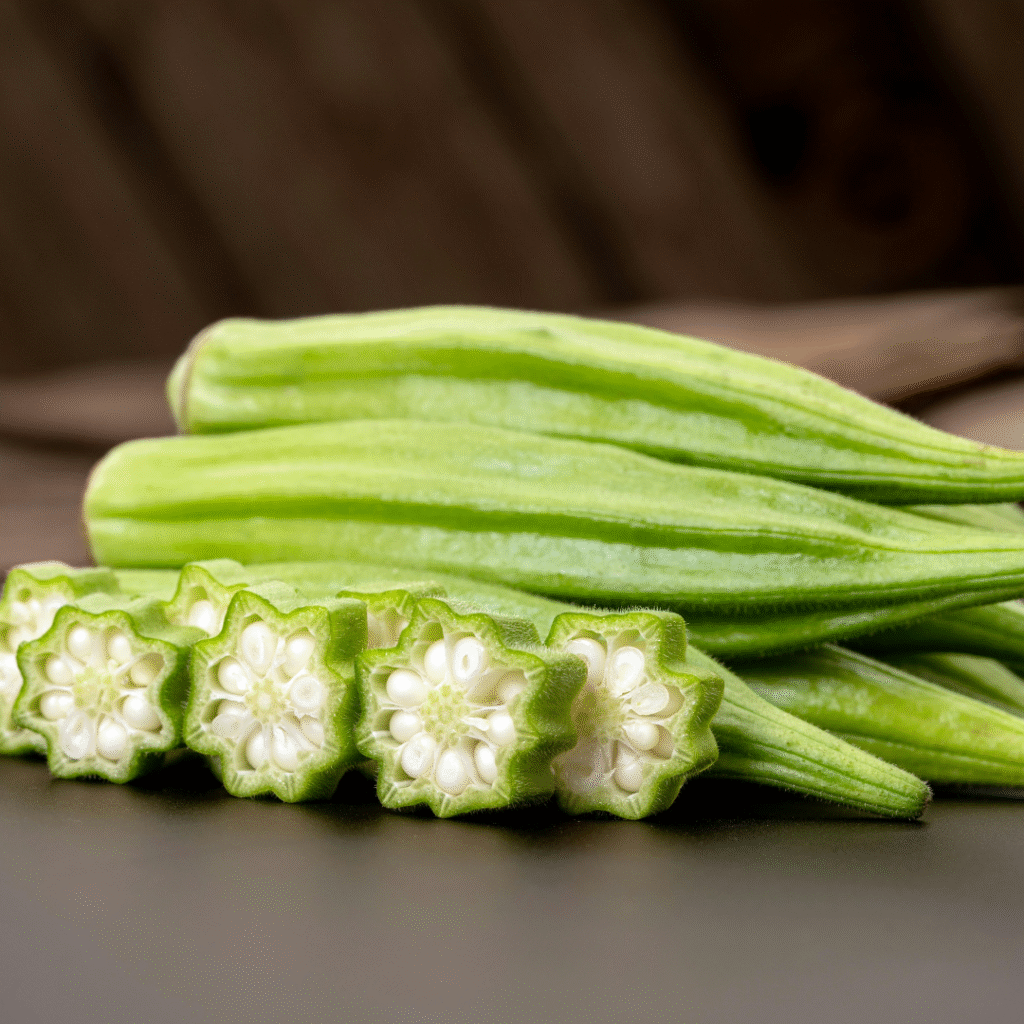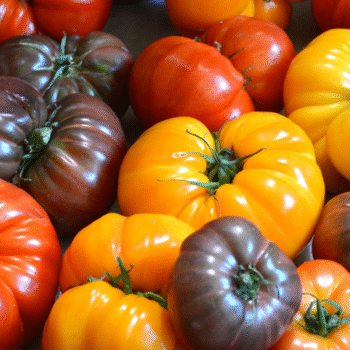Thriving 8 Veggies to Plant in May: Cultivate Your Best Harvest Yet!
Starting a vegetable garden is one of the most rewarding ways to connect with nature, nourish your body, and add beauty to your home—whether you’re a novice with a sunny patio or a seasoned pro with a sprawling plot. Gardening isn’t just about growing food; it’s about cultivating joy, learning patience, and savoring the satisfaction of harvesting what you’ve nurtured from seed to plate. May is a magical month for planting, with warm soil, longer days, and the promise of a bountiful summer ahead. Let’s dive into the eight powerhouse veggies you should plant this May, complete with the details you need for a successful, abundant harvest!
Okra – Clemson Spineless

Okra
Okra is fiber-packed for your gut! It helps keep things moving, supports digestion, and is loaded with vitamin C and antioxidants for glowing skin and a strong immune system. Plus, its fiber helps regulate blood sugar and keeps you feeling full—perfect for healthy snacking.
Temperature: Okra thrives in heat, preferring soil temperatures of 75–90°F. Wait until the soil is consistently warm before planting.
Spacing: Plant seeds 9–12 inches apart in rows 3–6 feet apart, at a depth of ¾ inch. If you plant multiple seeds per hole, thin out to leave only one strong seedling per spot.
Harvest Time: Flowering starts as soon as 45 days after seeding. Pods are ready for harvest 5–6 days after flowering. Pick every 2–3 days for the most tender pods.
Watering: Okra likes consistent moisture but doesn’t want soggy feet. Water deeply once or twice a week, especially during dry spells.
Tip: Okra loves full sun and benefits from rich, well-drained soil. For best yields, pick pods when they’re 3–4 inches long—any larger, and they’ll get tough.
Sweet Potato
Sweet potatoes are the ultimate comfort food with a nutritious twist. They’re bursting with vitamin A for eye health, fiber for a happy gut, and antioxidants to keep your cells in top shape. They even help with immunity and can support heart health—talk about a “superfood”!
Temperature: Plant sweet potatoes about a month after the last frost, when soil is warm—ideally above 65°F.
Spacing: Place slips 12–18 inches apart, with 3 feet between rows to give vines room to sprawl.
Harvest Time: Sweet potatoes are ready to harvest when the ends of the vines start yellowing, typically 90–120 days after planting.
Watering: Keep the soil consistently moist, especially during the first month. After that, water deeply once a week—don’t let the soil dry out completely.
Tip: Sweet potatoes love loose, loamy soil enriched with compost. Mulch to keep weeds down and moisture in. Cure harvested roots in a warm, well-ventilated spot for 10 days to develop sweetness.
Chili Peppers – Lemon Drop

Chili Peppers
Lemon Drop peppers bring the zing and the benefits! They’re rich in vitamin C for immune support, and the capsaicin inside may help reduce inflammation and give your metabolism a little boost. They’re low-calorie, too, so you can spice up your meals guilt-free.
Temperature: Lemon Drop peppers need soil temperatures between 70–85°F for germination. Wait until all danger of frost has passed.
Spacing: Space plants 18–24 inches apart for good air circulation.
Harvest Time: Expect peppers to mature in 80–100 days from transplanting. They’ll turn bright yellow when ready.
Watering: Keep the soil consistently moist but not soggy. Water at the base to avoid wetting the leaves, which can invite disease.
Pro Tip: Lemon Drop peppers love full sun—6–8 hours a day is ideal. Harden off seedlings before transplanting by gradually exposing them to outdoor conditions.
How to Harden Off Lemon Drop Chili Peppers
Hardening off is the process of gradually introducing your Lemon Drop chili pepper seedlings to outdoor conditions, so they don’t get shocked by the sun, wind, or temperature swings. Here’s a simple, gardener-friendly method:
- Start 1–2 weeks before transplanting. When daytime temps are consistently above 60°F and nights are frost-free, you’re good to go.
- Day 1–3: Place your seedlings outside in a shady, sheltered spot for 1–2 hours, then bring them back inside. Avoid wind and direct sun at first.
- Day 4–7: Gradually increase their outdoor time by 1–2 hours each day. Start giving them a little morning or late afternoon sun, but keep most of their time in the shade.
- Day 8–10: Let them soak up more sun, adding an hour or so of direct sunlight each day. Watch for wilting or leaf burn—if you see it, scale back and let them recover inside.
- Final step: Once they’ve spent a full day and night outside without distress, your peppers are ready for their permanent garden home!
Tip: Use a gentle fan indoors before you start to help toughen up their stems. Always protect from strong winds, heavy rain, or sudden cold snaps during the process.
Bush Beans
Bush beans are plant-based protein champs, packing in protein, fiber, and a whole alphabet of vitamins. They’re great for your heart, help lower cholesterol, and support a healthy gut. Plus, they enrich your garden soil, so they’re good for you and your garden.
Temperature: Beans are warm-season crops—plant in May when daytime temperatures are moderate and the soil is warm.
Spacing: Plant seeds 1.5–2 inches apart in rows 30–36 inches apart, at a depth of 1–1.5 inches.
Harvest Time: Most bush beans are ready to pick in about 50 days. Harvest when pods are firm and crisp.
Watering: Beans need regular moisture, especially during flowering and pod development. Drip irrigation helps keep leaves dry and disease at bay.
Tip: Beans fix their own nitrogen, so don’t over-fertilize. Succession plant every 2–3 weeks for a steady harvest all summer.
Lettuce – Boston & Butterhead

Lettuce
Lettuce is the hydration boss of the veggie patch—nearly 95% water! It’s loaded with vitamins A, C, and K for healthy skin, bones, and immunity, but super low in calories. It’s your go-to for crisp, refreshing salads that keep you full and hydrated.
Temperature: Lettuce prefers cooler weather but can handle early May plantings. Opt for partial shade or morning sun if your May gets hot.
Spacing: Sow seeds 1 inch apart, then thin to 10–12 inches between plants. Space rows 12–18 inches apart.
Harvest Time: Butterhead lettuces mature in 55–60 days, but you can harvest leaves as needed throughout the growing cycle.
Watering: Keep soil consistently moist—lettuce has shallow roots and wilts quickly in dry conditions.
Life Hack: Mulch around plants to keep soil cool and moist. Harvest heads early in the morning for the crispest leaves.
Kale – Curly & Red Russian
Kale is the king of leafy greens! It’s packed with vitamin C for immunity, calcium for strong bones, and antioxidants that may help protect against heart disease and cancer. Plus, it’s great for eye health and keeps your body running like a well-oiled machine.
Temperature: Kale is a cool-season crop but can be planted in early May for a summer harvest. It tolerates light frost and even a bit of summer heat if given some afternoon shade.
Spacing: Sow seeds ¼–½ inch deep, 12–18 inches apart. Thin seedlings to 8–12 inches apart for larger leaves.
Harvest Time: Kale is ready to pick in 50–70 days. Harvest outer leaves as needed, and the plant will keep producing.
Watering: Keep soil consistently moist, watering several times a week during hot weather. Mulch helps retain moisture.
Power Move: Regular harvesting encourages new growth. Young, tender leaves are perfect for salads, while mature leaves are great for cooking.
Tomatoes – Cherry & Cherokee

Tomatoes
Tomatoes are little flavor bombs that deliver big health perks. They’re rich in lycopene, which helps fight free radicals, supports heart health, and may even protect your skin from UV damage. Plus, they’re loaded with vitamins A and C and are super versatile in the kitchen.
Temperature: Tomatoes thrive in temperatures between 65–85°F. Wait until the soil is warm and nighttime temps are consistently above 50°F.
Spacing: Space plants 18–24 inches apart for cherries, 24–36 inches for larger varieties like Cherokee Purple. Stake or cage for support.
Harvest Time: Cherry tomatoes mature in 60–70 days; Cherokee Purple takes about 80–90 days. Pick when fruits are fully colored and slightly soft.
Watering: Tomatoes need 1–2 inches of water per week. Water at the soil line to avoid wetting foliage, which can lead to disease.
Tip: Mulch to retain moisture and prevent soil splash. Prune suckers for better airflow and bigger fruit.
Peppers – Bell & Jalapeno
Bell peppers are antioxidant powerhouses, offering vitamin C, beta-carotene, and more to boost immunity, support eye health, and help your body absorb iron. Jalapenos turn up the heat with metabolism-boosting capsaicin, vitamin C for immunity, and compounds that may help prevent cancer and support heart health.
Temperature: Peppers love heat—soil should be at least 70°F before planting. Wait until after the last frost7.
Spacing: Plant 18–24 inches apart in rows 24–36 inches apart.
Harvest Time: Bell peppers mature in 60–90 days; jalapenos in 70–85 days. Pick bell peppers green or let them ripen to red for sweeter flavor.
Watering: Keep soil evenly moist. Peppers are sensitive to drought, which can cause blossom end rot.
Tip: Peppers benefit from a little afternoon shade in hot climates. Mulch and regular feeding keep plants healthy and productive.
Quick Reference Table

These are the veggies I’ve chosen to plant this May, and I couldn’t be more excited for the season ahead. Whether you’re growing on a balcony or in a backyard, these eight vegetables offer variety, nutrition, and plenty of gardening fun. Remember, there are countless other veggies and varieties to explore—so don’t be afraid to experiment, swap seeds with friends, or try something new each year. Happy planting, and here’s to your most abundant, joyful harvest yet!
For more veggies and herbs to plant throughout the year click here and here.
Please Share and Subscribe. It Really Helps. Thanks A Million!
All items mentioned can be easily purchased by clicking on the orange links sprinkled throughout the post.















0 Comments